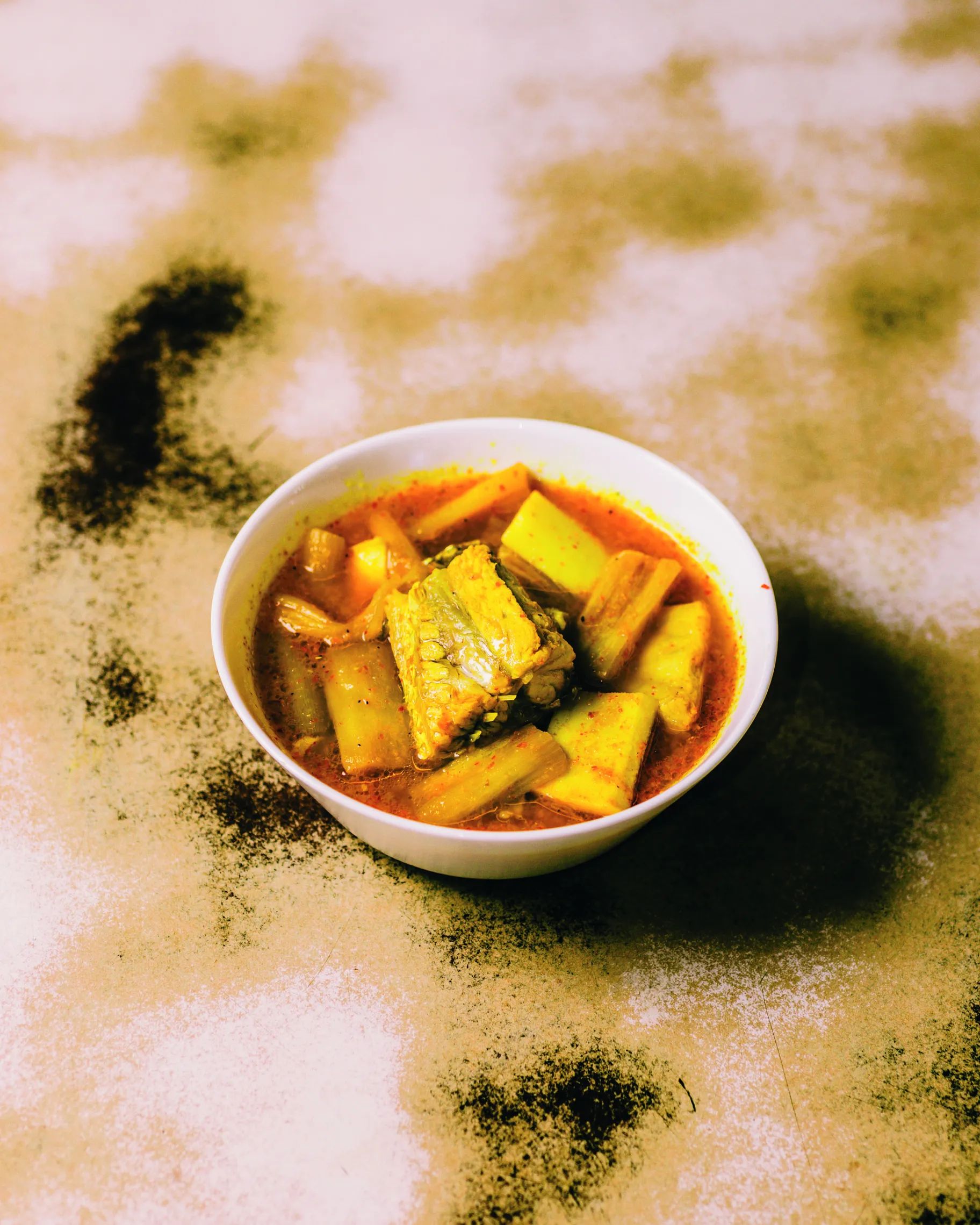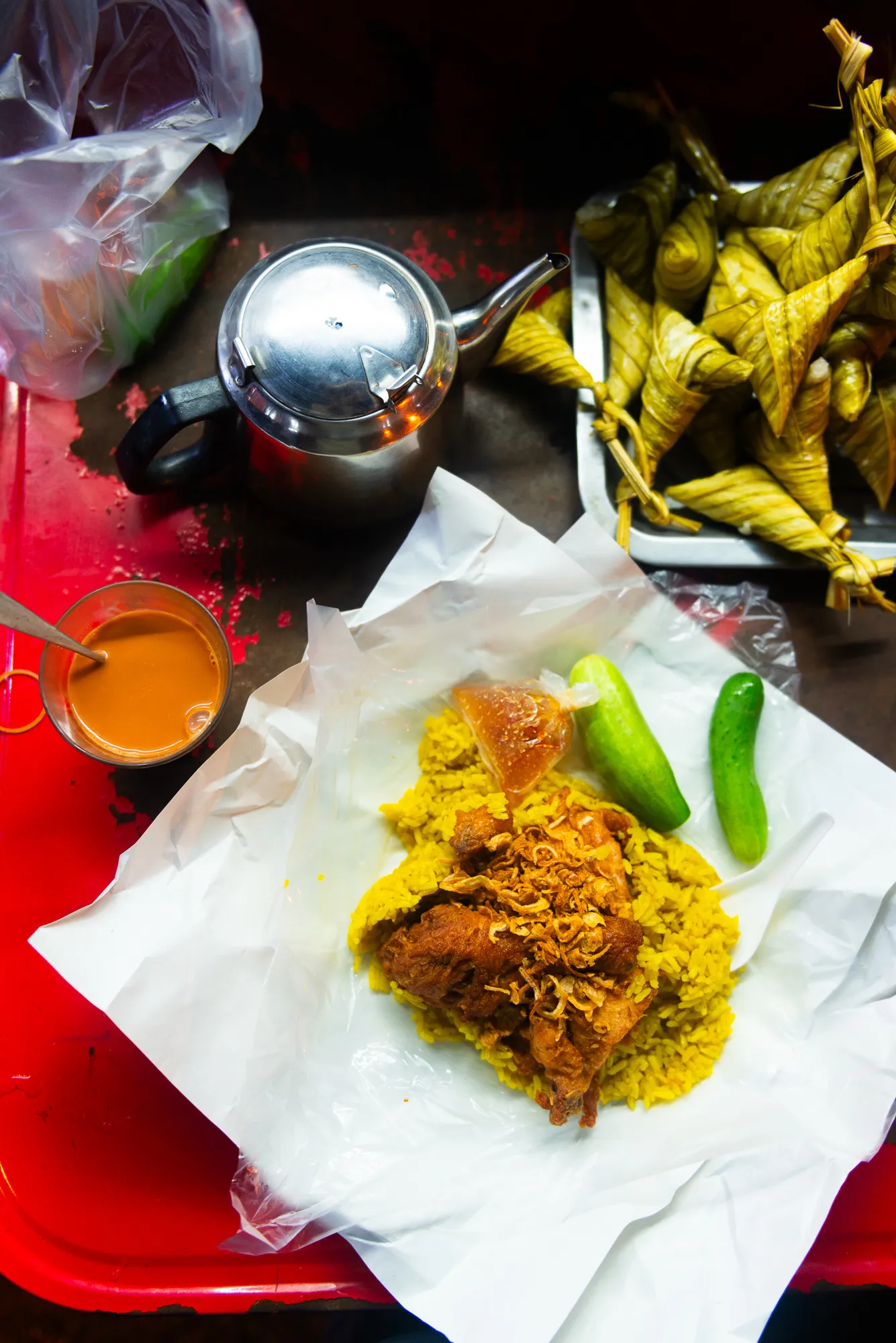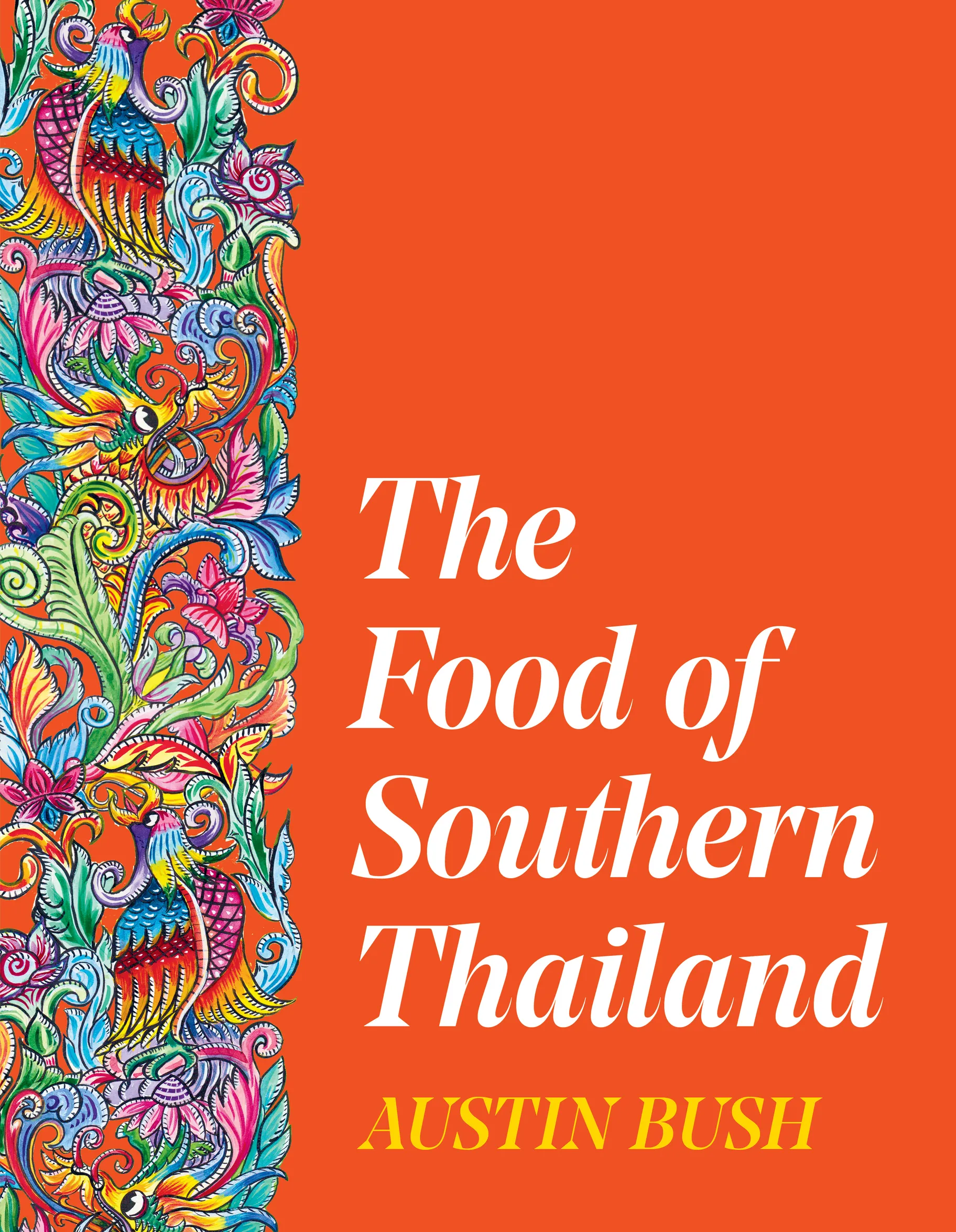Writer and photographer Austin Bush came to Thailand as a University of Oregon linguistics student. He stuck around and ended up living there for more than two decades. In 2018, he released The Food of Northern Thailand, a cookbook that aimed to broaden diners' horizons. But what about the rest of the country? In The Food of Southern Thailand, Bush once again expands his geographic and culinary horizons.
If you were to start in Northern Thailand and travel south, the country narrows and becomes mountainous with coastline on either side. People speak a different dialect and the food changes.
"It's a very distinct, palpable change," Bush says. "In Northern Thailand, they eat sticky rice and there's a lot of grilled dishes and raw meat dishes. In Southern Thailand, they eat long-grain rice and the dishes are spicy. There's a lot of coconut milk and seafood. Southern Thai is the spiciest regional Thai cuisine."
Many dishes start with a paste of herbs and spices — often made with dried chilies, fresh chilies, black peppercorns, and ginger — pounded together. Bush notes how China has influenced Southern Thai food. Malaysia, which shares a border with Southern Thailand, has also influenced the cuisine.
In the tourist hub of Phuket, "You'll find this entire repertoire of dishes that are essentially Chinese dishes that take advantage of Southeast Asian herbs and ingredients — lemongrass, coconut milk, all those sorts of things," Bush says. "In Phuket, it's known as baba."
One of the most famous examples is a moo hong, a dish of fatty pork belly braised with brown sugar, garlic, soy sauce, and a "kind of insane amount" of cracked black pepper. "Those are a lot of Chinese ingredients but I don't know that it's a dish that exists in China," Bush says.

"Southern Thai-style kaeng som should be tart and spicy, but it should also be enjoyable and delicious," writes Austin Bush. Photo by Austin Bush.
A Tart, Spicy Soup with Vegetables and Fish
Kaeng Som
แกงส้ม
Serves 4
Any book about southern Thai cooking needs to start right here. In addition to the fact that it is the region's most famous dish, the ingredients that go into this soup, known locally as kaeng som (outside of the region as kaeng lueang, "yellow curry"), and the balance required when adding them culminate in a sort of crash course in southern Thai cooking — an exercise in extreme ingredients and flavors that, when taken as a whole, aren't so extreme.
Like many southern Thai dishes, kaeng som starts with an herb paste, a combination of aromatics and seasonings pounded with a mortar and pestle. Small incendiary chiles, fresh turmeric, garlic, lemongrass, and shrimp paste are obligatory elements of this particular paste. But beyond these, the only other constants of the dish are a tart and spicy flavor, some sort of vegetable and/or fruit, and fish. The vegetable or fruit could be unripe green papaya, cauliflower, or finger-sized potatoes; the tart flavor could stem from lime juice, tamarind pulp, sour fruit, or pickled bamboo, or a combination of some or all of these; and just about any saltwater fish — or shrimp — will do. Also essential are meticulous adding and constant tasting — gauging and adjusting seasonings until a balance that fits how the dish is meant to taste along with a bit of wiggle room for your personal preference is reached. Yes, southern Thai-style kaeng som should be tart and spicy, but it should also be enjoyable and delicious.
Ingredients
For the herb paste
- 1/2 teaspoon table salt
- 28 tiny spicy fresh chiles (15 g total)
- 3 medium spicy fresh chiles (12 g total), sliced
- 2 stalks lemongrass (50 g total; see page 19 for instructions on how to prepare lemongrass for an herb paste)
- 3 fingers fresh turmeric (45 g total), peeled and sliced
- 5 cloves garlic (25 g total), peeled and sliced
- 1 tablespoon shrimp paste
For the soup
- 150 g fresh pineapple, 1/2-inch-by-1-inch pieces
- 100 g heart of palm, 1-by-2-inch thin slices
- 6 tablespoons lime juice
- 3 tablespoons white sugar
- 400 g sea bass filet, 1-by-2-inch chunks
Instructions
-
Up to 5 days in advance, make the curry paste: Pound and grind the salt, tiny chiles, and medium chiles to a coarse paste with a mortar and pestle. Add the lemongrass and pound and grind to a coarse paste. Add the turmeric and pound and grind to a coarse paste. Add the garlic and pound and grind to a coarse paste. Add the shrimp paste and pound and grind to a fine paste. (Alternatively, if using a food processor or blender, process the salt, tiny chiles, medium chiles, lemongrass, turmeric, garlic, and shrimp paste to a fine paste.) If making it in advance, remove the paste to an airtight container and store in the refrigerator.
-
Make the soup: Bring 4 cups (1 l) water to a boil in a saucepan over high heat. Add the curry paste, stirring to dissolve. When the water reaches a boil again, add the pineapple and heart of palm. Bring to a boil, reduce the heat, and simmer until the pineapple and heart of palm are just tender, around 5 minutes. Add the lime juice and sugar, stirring to dissolve. When the soup reaches a simmer again, add the fish and simmer until it is just cooked through and opaque, around 2 minutes. Taste, adjusting the seasoning if necessary; the soup should taste equal parts bracingly tart and spicy, followed by subtly sweet and salty flavors. It should have a bright yellow, almost orange hue; a pleasant and distinct aroma from the fresh turmeric and lime juice; and a subtle crunch from the pineapple and heart of palm.
-
Remove to a serving bowl and serve warm or at room temperature with long-grain rice.

Khao mok rot sing hat yai songkhla, a dish of fried chicken, is served over fragrant rice. Photo by Austin Bush.

Writer and photographer Austin Bush lived in Thailand for more than two decades and has written two English-language cookbooks highlighting the country's cuisine. Photo by Jason Lang.

"The Food of Southern Thailand" focuses on seafood dishes, spicy soups, coconut-based sweets, and other regional favorites. Photo courtesy of W. W. Norton & Company.
